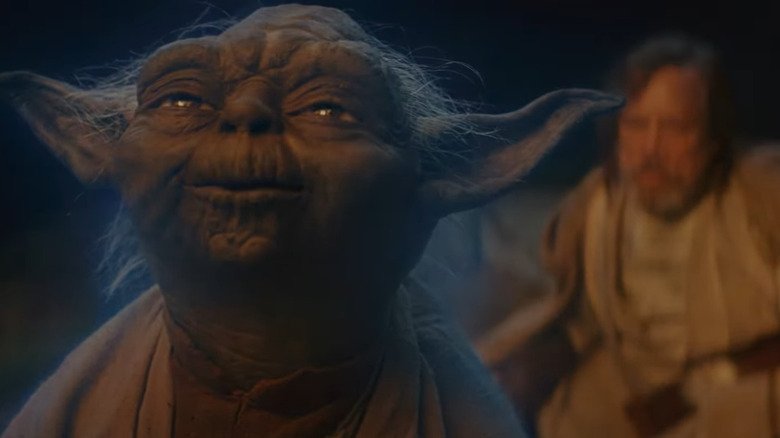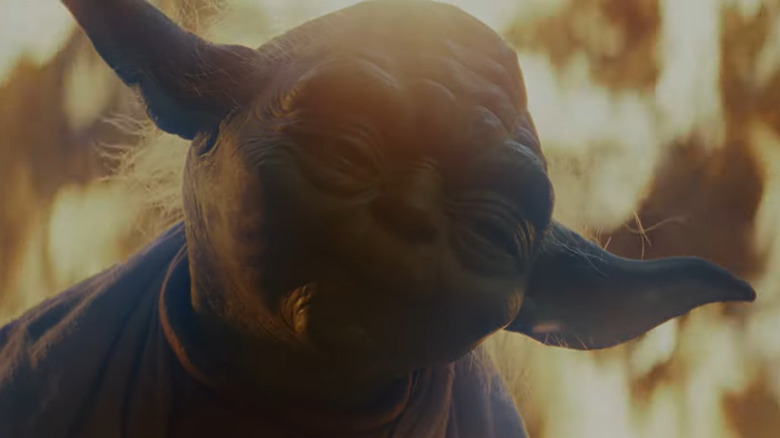The Return Of The Yoda Puppet In Star Wars: The Last Jedi Put Frank Oz Through The Wringer
For some fans, "Star Wars: The Last Jedi" is one of the best things the "Star Wars" franchise put out since "The Empire Strikes Back," the only one of the Disney films that seems to be interested in more than just cashing in on cheap nostalgia points. For other, much louder fans, "The Last Jedi" is the worst movie ever made. The treatment of Luke (Mark Hamill) was apparently insulting to the character, and they hated Rose Tico so much that she was removed almost entirely from "The Rise of Skywalker."
Even the re-introduction of the beloved Yoda (Frank Oz) was not received with the expected applause from a lot of die-hard "Star Wars" fans, even though his characterization in the film was a welcome return to the way Yoda was written in the original trilogy. Whereas the prequels largely ignored Yoda's role as a quirky, wise mentor in favor of giving him over-the-top lightsaber fights, "The Last Jedi" had him return to doling out actual wisdom to his apprentice.
"I couldn't understand that whole backlash," Frank Oz said to Collider about the divided response to the film. "I didn't get it. I thought it was a great piece of work."
One thing most fans did enjoy, however, was the decision to have Yoda be a puppet again, not the CGI monstrosity he was in the prequels. It was a good decision not just because it served as a return to the visual style of the original trilogy, but because it signaled the movie's priorities for the character. This was a version of Yoda who had a restrained, peaceful relationship with the force, not someone who'd be battling any Sith lords again anytime soon. Much like with "Empire," however, puppet Yoda led to a lot of obstacles behind the scenes.
A four-man job
"They had two people, three people turn on a grate to help me. It's a four-person character," Frank Oz explained. "It's very intense rehearsal because you have four people trying to do one thing, very, very specifically. So, every single word, every single move, had to be rehearsed again and again."
The point of this was so when they were on set, interacting with Mark Hamill's Luke, they wouldn't be wasting any time. Famously, Mark Hamill had a hard time in 1982 on the set of "Empire Strikes Back" because he was spending so much time trying to act with just a puppet. In normal scenes, interacting with regular human actors, you're able to react to the other actors' lines and facial expressions in real time. With Yoda scenes, however, Hamill had to do the much harder job of convincing us he was talking to an actual living character.
"People don't realize that a great part of the reason why Yoda works, is because of Mark," said Frank Oz. "It's because if Mark doesn't believe in that character, nobody else will."
The actual shooting process for Yoda's scene, not including the rehearsals, only took "a day and a half — night and a half," according to Oz. Yoda's role in "The Last Jedi" is much smaller than it was in "Empire," after all, and the crew had the behind-the-scenes lessons from the original trilogy to learn from. It also didn't hurt that Oz had a great working relationship with writer/director Rian Johnson: "Rian is a complete gem," Oz said. "We get along so great."

